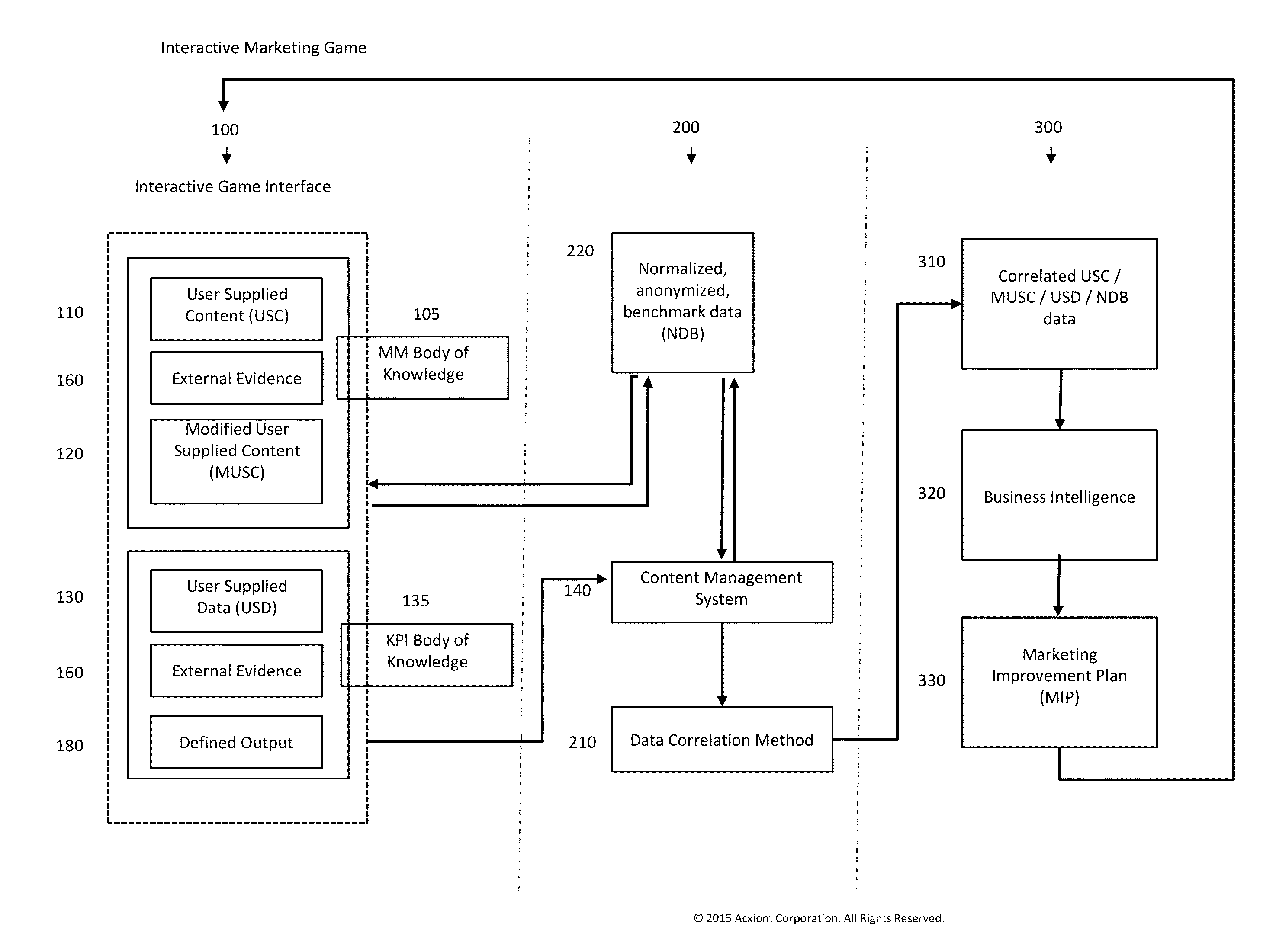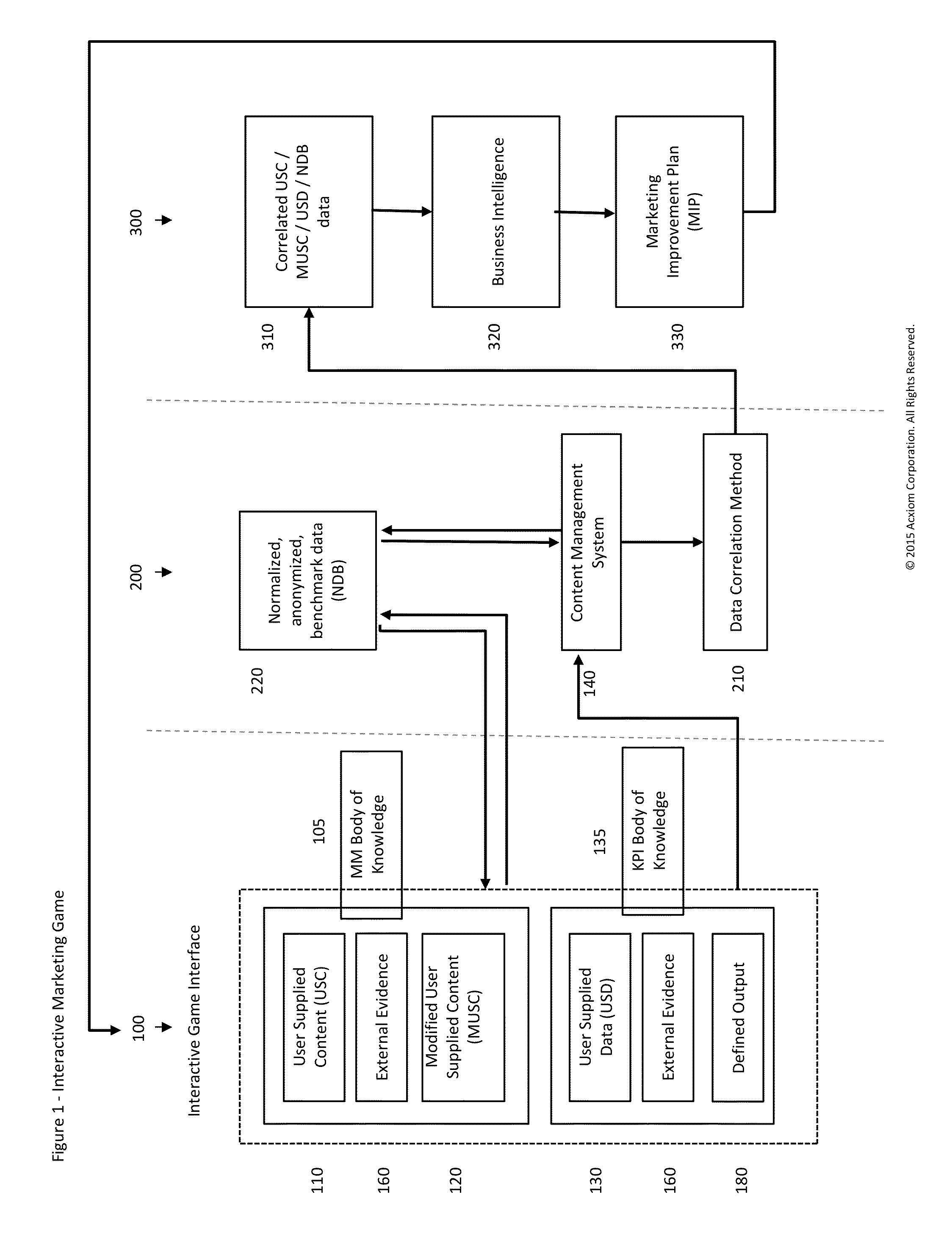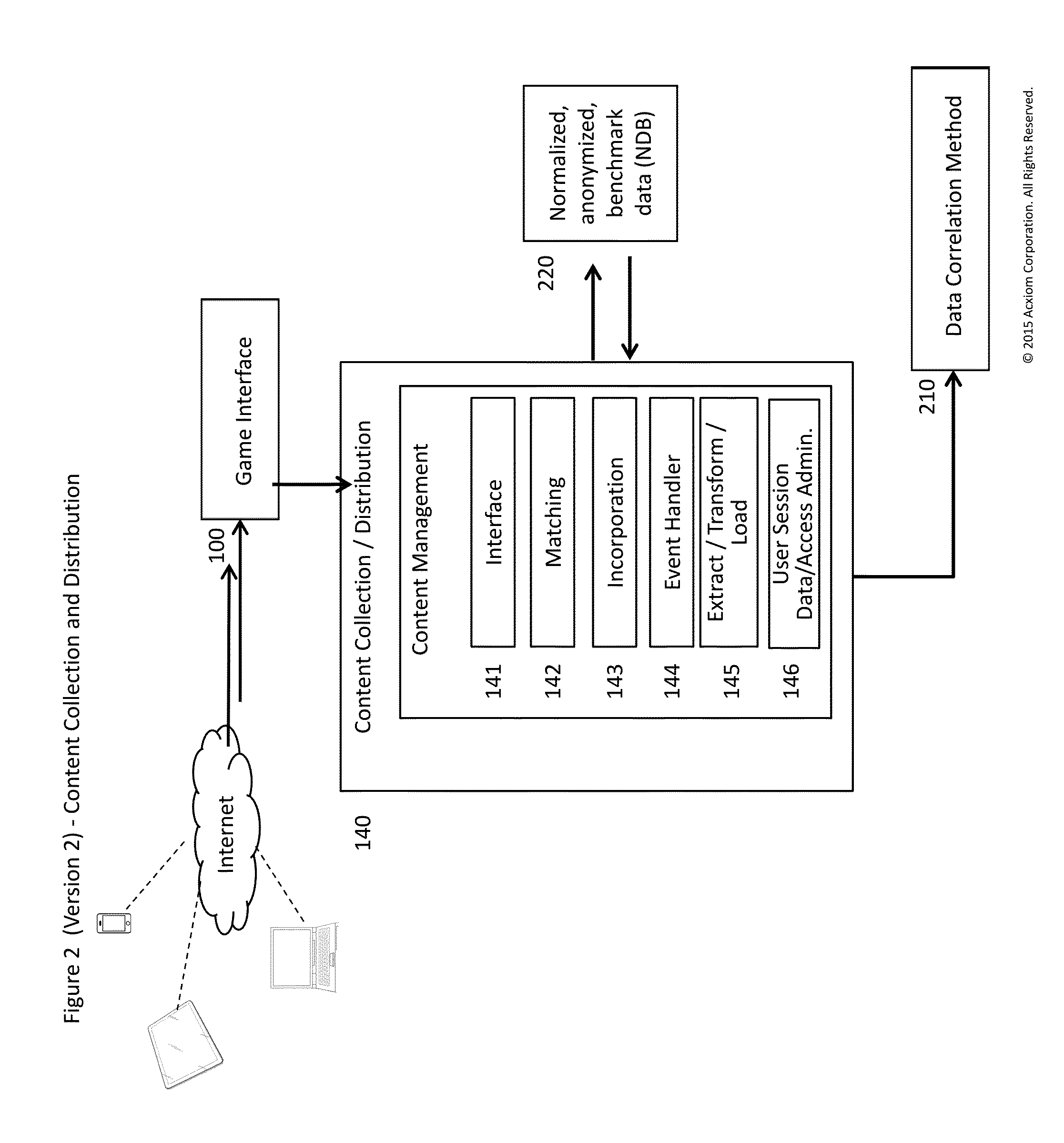Interactive Marketing Simulation System and Method
a simulation system and simulation technology, applied in the field of interactive marketing simulation system and method, can solve the problems of delayed implementation of improvement, inability to optimize the underlying operational capabilities, and inability to efficiently use human resources, purchased and manufactured data, and computational resources, so as to achieve high efficiency, improve business performance, and reduce the effect of computational cycles
- Summary
- Abstract
- Description
- Claims
- Application Information
AI Technical Summary
Benefits of technology
Problems solved by technology
Method used
Image
Examples
Embodiment Construction
[0035]In certain implementations, the invention is directed to a specific technique for determining, testing, and optimizing the actions needed to increase marketing capability as measured by the marketing maturity quotient (MMQ) and related marketing performance across time as measured by specific key marketing performance indicators (KPIs), which may also be referred to as marketing metrics, for a particular organization or division within an organization are described. User supplied content (USC) is entered by a user. A user is a particular individual acting on behalf of an organization or division within an organization.
[0036]The data correlation module of the game has two major components that ultimately produce information that populates other tables: the Body of Knowledge (BoK) represented by the records in the anonymized normalized database, and then all of the information supplied by a new user or authorized third party acting on behalf of a company or company division. Com...
PUM
 Login to View More
Login to View More Abstract
Description
Claims
Application Information
 Login to View More
Login to View More - R&D
- Intellectual Property
- Life Sciences
- Materials
- Tech Scout
- Unparalleled Data Quality
- Higher Quality Content
- 60% Fewer Hallucinations
Browse by: Latest US Patents, China's latest patents, Technical Efficacy Thesaurus, Application Domain, Technology Topic, Popular Technical Reports.
© 2025 PatSnap. All rights reserved.Legal|Privacy policy|Modern Slavery Act Transparency Statement|Sitemap|About US| Contact US: help@patsnap.com



